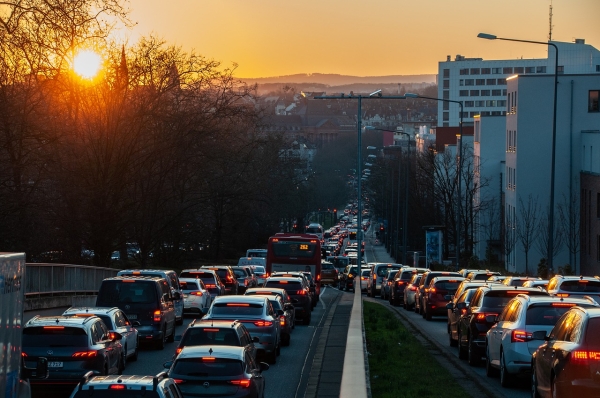So, there's this thing called the zipper merge that we're apparently supposed to know about despite no information on it provided through driver's education classes. I'd like to chalk it up as some hipster California trend, but before I do, I guess I should explain how it works to give it a fair shake.
In a zipper merge, imagine two lanes merging into one. Instead of one lane yielding to the other, drivers take turns merging, like the teeth of a zipper coming together. This method allegedly helps maintain a more efficient flow of traffic, reducing congestion and promoting fairness among drivers.
The zipper merge is designed to improve traffic flow and reduce congestion. By encouraging drivers to use both lanes until the merge point and then take turns merging, it utilizes the full capacity of the roadway. This method helps prevent one lane from backing up excessively, leading to a smoother and more efficient traffic flow for everyone involved. It also promotes a fair and orderly transition, minimizing frustration among drivers.
If that doesn't seem to totally check out to you, I'm in agreeance. I can poke holes through this like it's a wet piece of paper. First off, let's be frank: the public is somewhat selfish. There's zero chance that everyone will want to play along with this and be concerned with what's fair on the roadway. It's just not in our nature, with the competitive American spirit. As Ricky Bobby would say, "If you ain't first, you're last!"
Secondly, there are vehicles of vastly different lengths on the highways. If there are big rigs lined up in one lane and small cars in the other, then the logic doesn't quite work. The truck lane would seemingly move roughly three times as fast, and if you expect a busy commuter running late for work not to jump in the lane that's moving, don't.
Up third is my biggest gripe with this zipper merge system. There is no such thing as two independent lanes turning into one neutral lane centered between them. It doesn't happen like that. It's not two lanes coming together to form a new lane but rather one lane joining into the other. One lane is supposed to yield while the other has the right of way, so really just be in the lane that makes sense for you.
Lastly, I think this method could be dangerous for road crews and emergency vehicles as it promotes waiting until the last moment possible to get out of the obstructed lane. If you were to merge a quarter mile back, you'd have the ample time to pick a spot where you could comfortably squeeze in. With the zipper merge on the other hand, if someone is unfamiliar with the concept or simply unwilling to let you in, you're either going to have to slam your brakes and cause more traffic or get into a collision with their car, a stationary barrier, or worst a parked emergency vehicle. Speeding is commonplace, drivers neglect to use their blinkers, headlights are left off in the rain, etc.; so why would I believe we could implement this properly? I'm going to keep researching it and will try to find a video of it happening in real time to help me wrap my head around this idea, since I'm open to some dialog on it.
They say the zipper merge helps to prevent bottlenecks somehow caused by cars entering and exiting the highways on off-ramps, and this is where I start to get a little confused. I am by no means an expert on traffic or congestion on the roadways, but I think whoever believes in this theory needs to wake up and understand the difference between a concept and real-world applications. I've had the thought before that if everyone else drove exactly like me, there would never be congestion. I'd go as far as saying that even if we pounded it into the heads of students in drivers ed and made it Ohio state law, it's still a pipedream.

